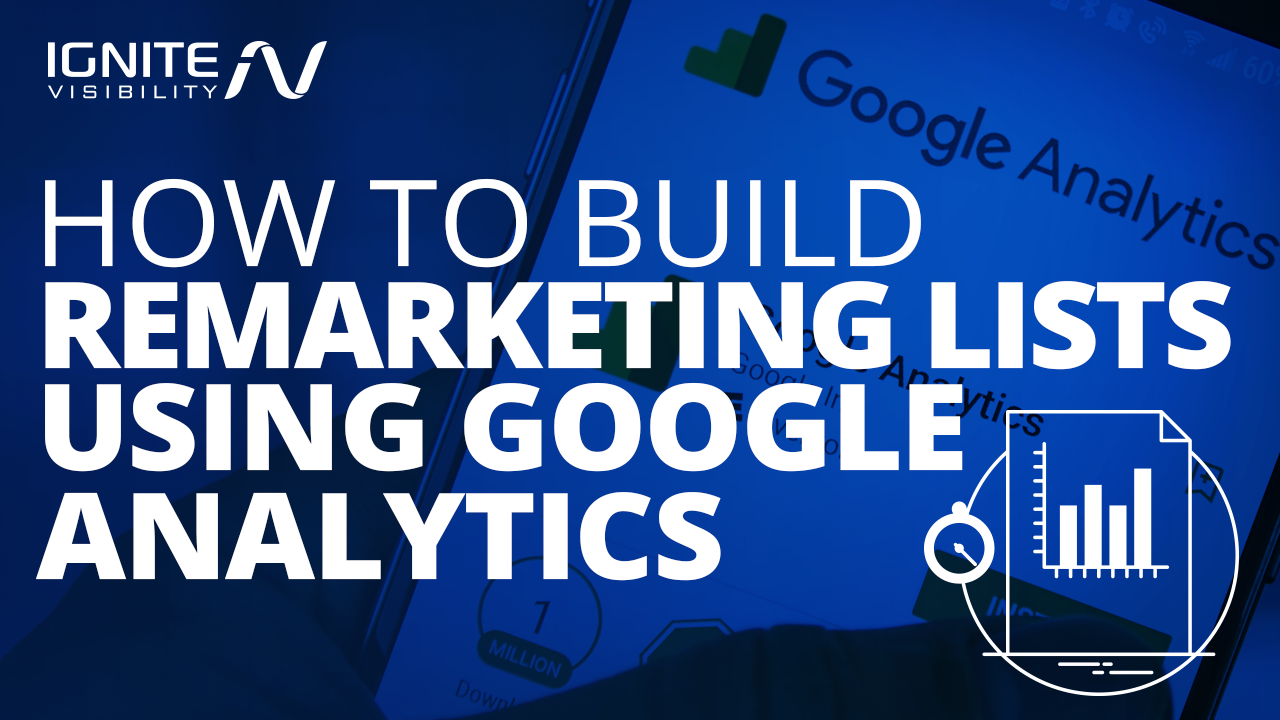Enhancing Your Campaigns with Remarketing In Google Analytics
Enhancing Your Campaigns with Remarketing In Google Analytics
Blog Article
Utilizing Remarketing in Google Analytics: A Comprehensive Overview
Harnessing remarketing in Google Analytics offers organizations a critical side in getting to out to prospective customers. This guide will certainly drop light on the necessary actions entailed in using the complete capacity of remarketing in Google Analytics, leading to enhanced advertising and marketing end results.
Comprehending Remarketing in Google Analytics
Remarketing in Google Analytics allows businesses to purposefully target individuals who have actually formerly interacted with their website or mobile application. By leveraging data from Google Analytics, businesses can develop personalized remarketing lists based upon user habits, such as pages seen, actions taken, or details goals attained. This powerful tool makes it possible for services to re-engage with users that have shown passion in their product and services, ultimately boosting the possibility of conversion.
Recognizing the different sorts of remarketing strategies is vital for a successful project - What Is “Remarketing” In Google Analytics?. Google Analytics offers different alternatives, including common remarketing, dynamic remarketing, and remarketing lists for search advertisements (RLSA) Each kind serves a special purpose and can be tailored to satisfy details advertising purposes
Moreover, analyzing the performance of remarketing campaigns is vital for maximizing results. Google Analytics gives valuable insights into the efficiency of different remarketing techniques, enabling businesses to make data-driven choices and improve their targeting approach. By continuously readjusting and checking remarketing efforts based upon analytics information, organizations can optimize ROI and drive success in their advertising and marketing campaigns.
Setting Up Remarketing Projects

After establishing target market listings, the next step is to connect Google Analytics with Google Advertisements. By connecting these two platforms, organizations can flawlessly transfer audience lists from Google Analytics to Google Ads for remarketing objectives. This combination enables even more accurate targeting and better project performance.
Once the accounts are connected, companies can create remarketing projects in Google Ads making use of the audience details previously defined in Google Analytics. These projects can be personalized with specific advertisement creatives, messaging, and bidding approaches to successfully re-engage with past visitors and drive conversions. By adhering to these steps, services can leverage the power of remarketing to boost their advertising initiatives and enhance ROI.
Making Use Of Audience Division Techniques

Predefined segments in Google Analytics enable you to swiftly assess common audience classifications like brand-new customers, returning users, or individuals that finished a particular goal on your internet site. Customized sections, on the various other hand, allow you to produce special sectors based upon specific criteria that are essential to your service goals. Dynamic remarketing checklists instantly adjust based on pop over to these guys user behavior, showing customized ads to users who have actually interacted with your site particularly ways.
Analyzing Remarketing Performance Metrics
Upon examining the effectiveness of remarketing projects in Google Analytics, the evaluation of crucial performance metrics gives useful insights into target market engagement and conversion rates. By diving into metrics such as click-through rates (CTR), conversion prices, expense per procurement (CPA), and return on advertisement invest (ROAS), online marketers can determine the success of their remarketing efforts. Examining these metrics enables marketing experts to enhance projects, improve audience targeting, and designate budgets successfully to boost overall remarketing performance.
Optimizing Remarketing Methods
When refining remarketing approaches in Google Analytics, focusing on audience segmentation is vital for attaining project success. By dividing your audience right into details sections based upon their actions, demographics, or interests, you can tailor your ads better per team. This targeted strategy increases the probability of engaging individuals who have already revealed interest in your services or items, leading to higher conversion prices.
An additional critical aspect of enhancing remarketing techniques is continually testing and refining your campaigns (What Is “Remarketing” In Google Analytics?). A/B testing different ad creatives, messaging, or deals can assist you determine what resonates ideal with your audience and drives one of explanation the most conversions. By analyzing the performance of these tests in Google Analytics, you can make data-driven choices to maximize your remarketing initiatives additionally
Moreover, leveraging dynamic remarketing can substantially improve your campaign results. This function allows you to show personalized advertisements to individuals based on their past communications with your web site, showcasing solutions or products they have formerly seen. By delivering customized material to users based on their interests and actions, vibrant remarketing can assist increase involvement and drive conversions.
Final Thought
To conclude, harnessing remarketing in Google Analytics is a strategic technique to target individuals that have previously involved with a website. By developing customized target market listings and making use of target market segmentation methods, companies can maximize remarketing campaigns for raised conversion rates. Analyzing efficiency metrics and continuously maximizing strategies look at this now are critical for making the most of the performance of remarketing efforts.
Google Analytics uses various alternatives, including typical remarketing, dynamic remarketing, and remarketing checklists for search ads (RLSA)After setting up target market lists, the next action is to connect Google Analytics with Google Ads. By connecting these 2 platforms, services can flawlessly transfer audience checklists from Google Analytics to Google Advertisements for remarketing functions.As soon as the accounts are linked, companies can develop remarketing projects in Google Ads utilizing the target market details previously defined in Google Analytics.When refining remarketing approaches in Google Analytics, concentrating on audience segmentation is vital for achieving project success.
Report this page